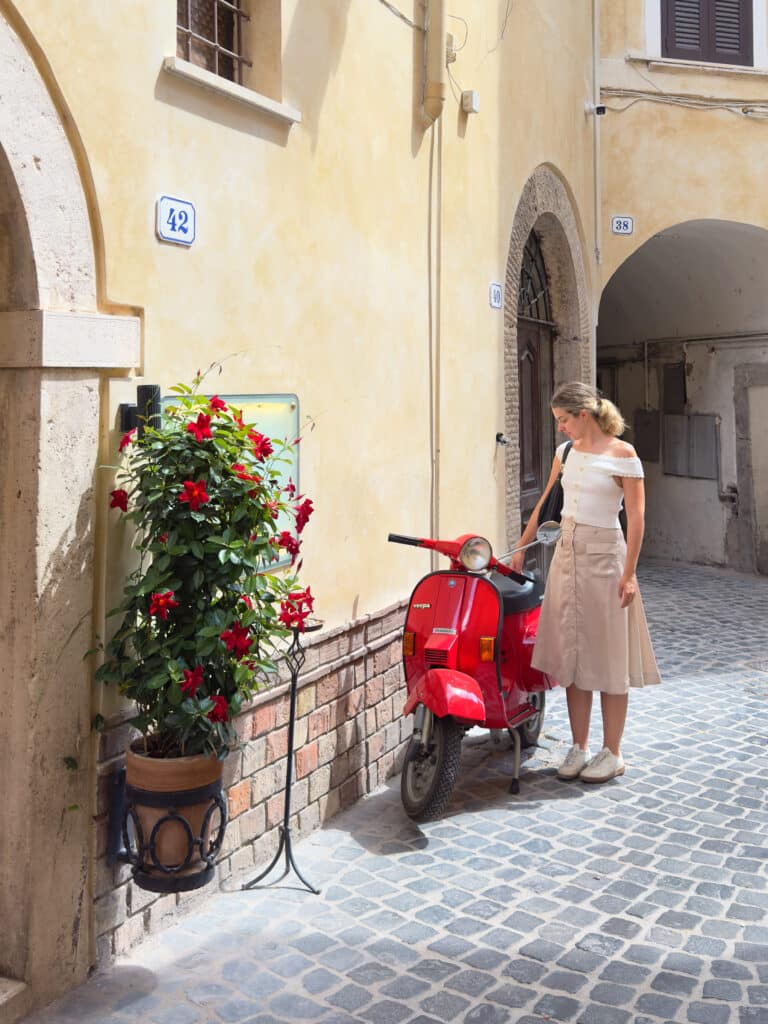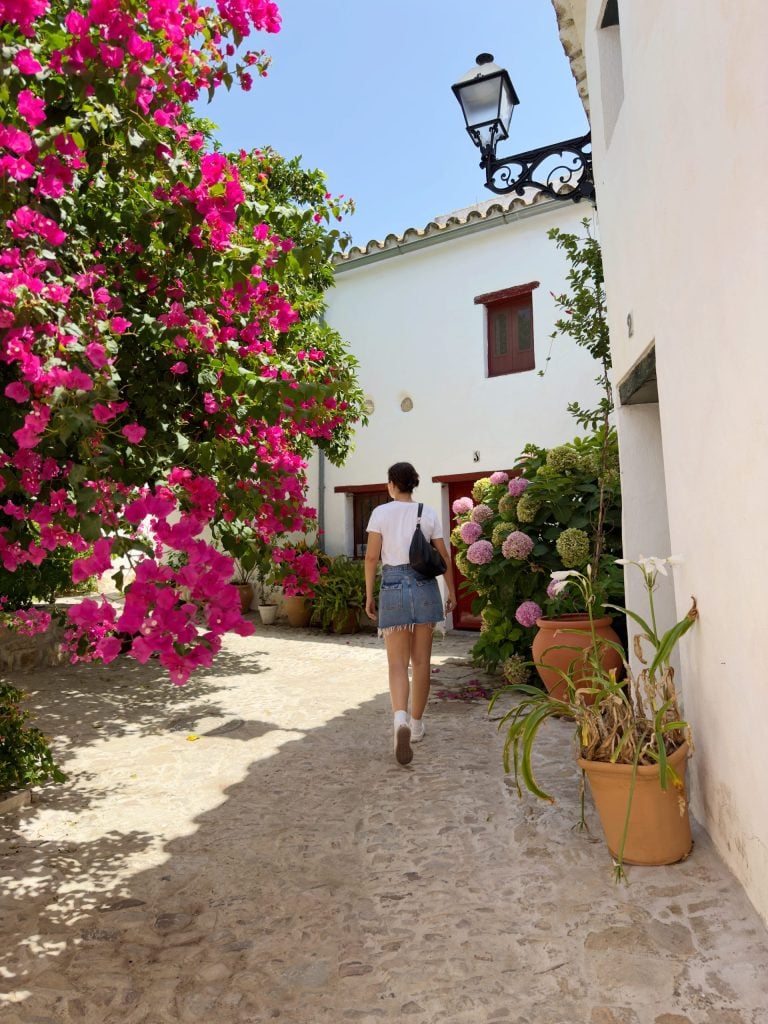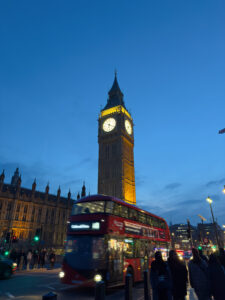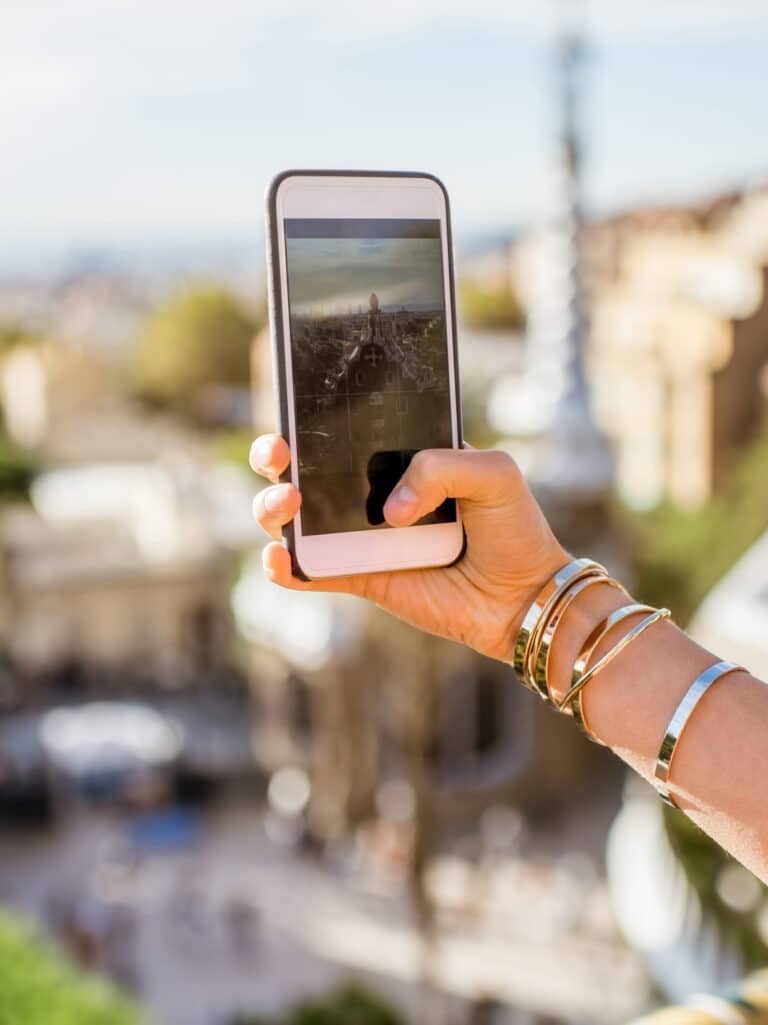Responsible Tourism Guide: How to be a Responsible Tourist in 2026
As travel continues to boom and social media fuels over-tourism in select destinations, it’s more important than ever to be mindful of how our actions and behaviors can impact the places we visit. I see 2026 as the year of Responsible Tourism, and this guide will show you exactly how to be a responsible tourist!
As a Third-Culture-Kid who’s grown up and lived in 3 different countries, Responsible Tourism has always been at the core of my values and how I travel. I grew up being culturally sensitive, obsessed with learning languages, supporting local businesses, connecting with locals, learning local traditions, and so forth.
Am I the perfect responsible tourist? While I do my best to be, there’s always room for improvement! This guide and reflection piece is here to inspire you to incorporate more responsible practices and mindsets into your future travels – that way we can lighten the load of locals feel when we travel to their destination.
Without further ado, let’s dive into Responsible Tourism and how to travel responsibly!😊👇
Disclaimer: This post has affiliate links that can help me earn a small commission, at no extra cost to you. If you click through and purchase with these links, thank you in advance for the extra support.💖😊
What is Responsible Tourism?
Responsible Tourism at its core is all about supporting the local communities, environment, and economy. It’s about leaving your destination bettered!
The Importance of Responsible Tourism
There are many styles of tourism, such as Sustainable, Regenerative, Luxury, Sport, and so forth.
I personally believe that Responsible Tourism is the most important type of tourism because it focuses on being respectful and giving back to local communities.
In addition to this, this type of tourism tends to overlap with Sustainable Tourism, Regenerative Tourism, and Ethical Tourism – bringing all the best practices together.
13 Ways to be a Responsible Tourist in 2026
1. Research Before You Visit the Destination
The very first step to being a responsible tourist is to research the destination you want to visit. This is a crucial step because it is where you can learn most things you need to know to incorporate Responsible Tourism practices.
Start by researching cultural norms, shoulder season travel to avoid crowds, and locally led activities you can join. I also strongly suggest hopping on a language learning app, such as Memrise, and learn some basic sentences. I also recommend searching for local stays!
2. Respect Cultural Norms and Traditions
When you go to your friend’s or family member’s home, you respect their house rules and are on your best behavior – traveling is no different.
It’s crucial to remember that as tourists, we are entering someone else’s home, not EPCOT or an adventure park. As tourists, it is our responsibility to be respectful of the locals, local spaces and environment, and follow cultural etiquette.
There are cultural norms and behaviors that you don’t necessarily need to adapt to, while others you certainly do. For example, ordering a cappuccino after 12 or with a meal might lead to severe judgement or refusal to serve – but no one gets injured.😂
On the other hand, in Japan, the country where respect is placed above all-else and is a country that suffers from over-tourism, you best be ready to follow the cultural etiquette. As an example, in Japan you stay silent on public transportation and you wear a mask if you’re feeling the slightest bit sick.
If you’re planning to travel to Japan, I have the research and answers ready for you – from when I was preparing for my trip, and what I learned during my travels. My guide to cultural etiquette and Do’s and Don’ts in Japan that will help you be a respectful and more responsible tourist.🇯🇵
3. Learn some words in the local language
One thing I hope 2026 never sees is tourists saying “why don’t they speak English”, “oh, I’d expect [destination] to be more accommodating to English”, etc…
I genuinely think that expecting locals to accommodate you in your language, especially English, is one of the most disrespectful things possible – and I’ve seen this far too often.
Most times, locals will be ecstatic when they see tourists speaking basic words and sentences in their language. This simple action shows the locals that you are a respectful person who really cares about their travels.
I was once “speaking” (basic japanese words + the help of Google Translate) with a security officer in Kanazawa, and he apologized for not knowing more English and all I could think was, who gave him this thought? I quickly told him if anyone should be learning a language, it was me – the tourist in his country.
4. Dress Appropriately
Whether it’s the dress code of a country, or dressing appropriately for religious sites, a responsible tourist will either dress accordingly or not enter.
For example, if you’re visiting a religious site such as a Mosque, the Florence Duomo, or a Shinto Shrine, you need to cover up. It’s good to note that often times, there will be someone turning you away if you don’t follow the dress code.
Dressing appropriately is not only for the respect of the locals and local spaces – but also safety reasons in certain destinations.
5. Ask before photographing
Going back to the sentiment about EPCOT, you need to remember that you’re in someone else’s home and locals are not props or exhibits — they deserve the same respect and privacy you’d want in your own town.
This is something that happens too often to Geishas and Maikos in Japan or children in African countries. How would you feel is a photographer came up to you, even worse your child, and started photographing you?
These are people just like you and need to be treated with nothing but respect. If you really want to photograph a person, or take a picture with them, ask them directly.
Another important reason to ask first is because you’ll never know if you’re putting someone in danger by sharing their photo and face online.
Now, if you’re taking photos of someone in a beautiful and traditional outfit with their back facing you, there shouldn’t be any issue.
6. The best Souvenirs are from Artisans
I know how tempting it is to buy postcards and fridge-magnets to grow your collection, but trust me – you can do so much better than that!
As tourists, we need to make it our priority and focus to support local businesses – instead of feeding the large and greedy corporate mouths that have dominated the market.
Local businesses are everything from restaurants, bar cafes, local-led tours and activities, and shops – including artisans and small businesses.
There are many reasons to buy souvenirs from local artisans and artists. One is that by doing so you will have a deeper travel experience and bring home more meaningful memorabilia.
Secondly, you will also be supporting local art and traditions. This is extremely crucial as artisanship is often lost throughout the years due to large corporations.
7. Support Local Accommodations and Businesses
Make a positive local impact by simply staying in local accommodations and eat at local restaurants.
You’ll have a way better experience anyway, with good local food and company. This is one of the best ways to dive into the local culture, and support the locals. You’ll have to eat and sleep somewhere anyway, why not make sure you spend your money in the right place?
Big chain hotels are usually international and managed by someone in a different country. Although they do create jobs, all profits often leave the country into the pockets of the rich owner elsewhere.
While staying at a homestay or locally run B&B means your money goes directly to your host. You support a local family and because they will spend their money in town, you support the local economy.
The same goes for restaurants and cafés. Plus the positive side effect that a family restaurant usually comes with family recipes. And we all know that grandma makes it best.
Contributed by Lizet from Awanderfoodworld
8. Travel during Shoulder Season
Shoulder season is the season in which a destination is more quiet and has less tourism. When you visit during shoulder season, you’re automatically helping in diminishing mass-tourism.
This is a practice that not everyone can partake in, and that is fine. Maybe you’re a teacher and can only travel in the summer, or you have kids in school, or there’s something really specific you want to see and experience, and more.
Important Note: Depending on the destination you’re visiting, certain businesses and attractions may close outside of peak-season. Make sure to do your research and check.
An alternative option if can only travel in peak season – add a lesser known destination or two to your itinerary! This point flows perfectly into point #9.👇
9. Visit Lesser-Known Destinations
In an age where everyone goes to the same viral destinations found on social media, many places are suffering from over-tourism. When you visit lesser-known destinations or hidden gems, you help spread the masses and minimize the impact that locals feel.
As an example, Kyoto is a city that is suffering from over-tourism. However, the Kyoto region is already less-visited, as everyone is concentrated in the city.
Besides reducing over-tourism, there are several other reasons to visit hidden gems. 1) You will help them economically. 2) You will dive deeper and experience a more authentic side to the country you’re visiting.
10. Travel Deeply, More Slowly
Nowadays, everyone wants to see all the highlights of a country in the little time they might have.
Having worked in corporate America, where PTO is abysmal, I completely understand that trips abroad are hard to plan and take. Therefore, you want to make the most of it, and see all the highlights. For example, you plan a trip to Europe and go capital-hopping.
While I understand the temptation to do and see it all, I do want to share that it IS possible to travel slowly and deeper with limited time. I mean, that’s exactly what Laura Dolci Travels is all about!😊
One of my biggest tips for traveling deeper is to keep your eyes truly open and stay as present as possible. Go on a long walk and look around yourself, sit at a local-owned cafe and do some people watching, or go shop at an artisan’s or locally-owned business.
Some other great things you could do are:
- Go on a local-led guided walking tour! This is the perfect combo of sightseeing, learning, and supporting the local businesses.
- Try to do small talk with a local. This can easily turn into the most heartwarming experience.
- Don’t rush yourself and treat attractions as “checklist” items.
- Read about an attraction or place before visiting to truly understand what it is, its history, and importance.
My favorite lesson from my solo trip in 2019, was that “stranger does not always mean danger” and it’s made me love people so much more than I already did.
11. Incorporate Eco-Friendly Behavior and be Respectful of the Environment
Responsible Tourism and Sustainable Tourism go quite hand-in-hand with each other – sharing many practices. When it comes to Eco-Friendly behavior, you can focus on walking, biking, or taking public transportation, over taxis.
Some other great eco-friendly actions include:
- Booking a local or eco-friendly stay engages in, and prioritizes, sustainable practices.
- Being conscious of your water and electricity usage.
- Don’t pile trash on trashcans that are full and find a more open trashcan.
- Support local businesses and artisans, whose products automatically are more environment-friendly than greedy corporations.
All of these small and simple practices can quickly add up to a positive impact.
12. Don’t Engage in Wildlife Tourism unless…
When it comes to wildlife tourism, it can be extremely difficult to navigate what’s ‘good’ and what’s ‘bad’ (in other words, what is ethical), as the wildlife tourism industry has sadly become one filled with “ethics-washing,” where businesses claim to be helping wildlife without meeting truly ethical standards.
That being said, taking part in ethical wildlife tourism can be a fantastic way to support conservation and help the wildlife you love.
Though there are numerous red and green flags to bear in mind when taking part in wildlife tourism, the main thing to bear in mind is that if a company is allowing you to touch wild animals in any way (petting, feeding, bathing or interacting very closely with wildlife), it is not truly ethical.
This is due to the fact that wildlife either needs to be tamed to be around humans comfortably, or be put into a situation in which they are not comfortable.
For five essential guidelines for ethical wildlife tourism, try these ground rules for each facility you visit:
- Hands off interactions only
- No guaranteed animal sightings,
- Clear information on where animals come from,
- No breeding unless for species preservation (for example of endangered animals),
- Transparency through visible statistics and accreditations (such as recognition from Global Federation of Animal Sanctuaries – GFAS). By being better informed, we as travelers can avoid contributing to unethical wildlife tourism and support places that genuinely care for animal welfare.
Contributed by Emma from That Travel
13. Keep an Open Mind and Be Humble
One of the most beautiful parts of traveling is the new eyes and perspectives that it brings you – if you let it.
When you enter someone’s home, you should follow their lead and “house rules”. You should also keep your mind open and stay curious, as it will open opportunities for you to learn and grow.
Final Thoughts on Responsible Tourism
Responsible Tourism isn’t about being perfect – it’s about being respectful and making intentional, responsible choices that support the people and places you visit. If every traveler did even just a few of these 13 things, the impact would be huge.
So in 2026, let’s be the kind of tourists who don’t treat travel like a checklist. Let’s be the ones who listen, who give back, and who make the world feel more connected.
I have to ask…
What’s one thing you always do on your travels, or will start doing, to be a responsible tourist? Let me know in the comments!☺️👇
Share this with family and friends who are planning a trip and want to travel more responsibly.🤩
Follow me on YouTube for my travel videos and other worldwide adventures, or on Instagram!🗺️








